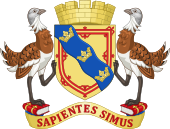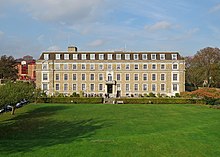Cambridgeshire and Isle of Ely County Council | |
|---|---|
 | |
| History | |
| Founded | 1 April 1965 |
| Disbanded | 1 April 1974 |
| Succeeded by | Cambridgeshire County Council |
| Meeting place | |
 | |
| Shire Hall, Cambridge | |
Cambridgeshire and Isle of Ely County Council was the county council of Cambridgeshire and Isle of Ely in the east of England. It came into its powers on 1 April 1965 and was abolished on 1 April 1974. [1] The county council was based at Shire Hall, Cambridge. [2] It was amalgamated with Huntingdon and Peterborough County Council to form an enlarged Cambridgeshire County Council in 1974. [3]
